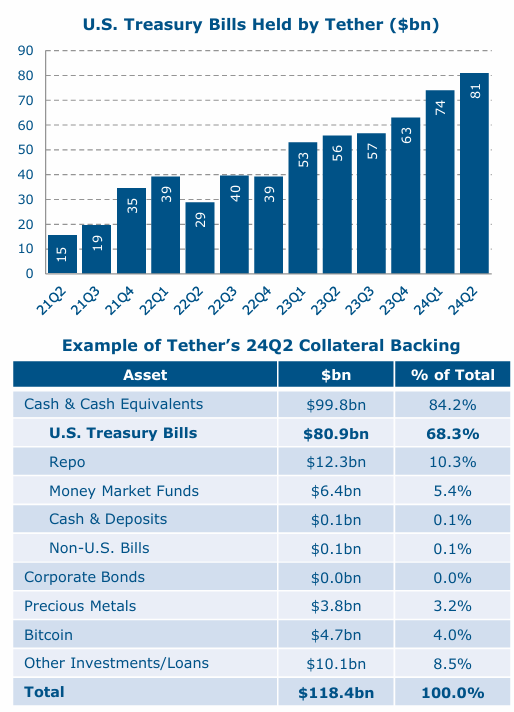Growth in stablecoins has resulted in a modest increase in demand for short-dated Treasuries, the US finance ministry wrote in its Q4 report. The most prevalent stablecoins in the market today are fiat backed stablecoins, and a very significant portion of that collateral is taking the form of T-bills and Treasury-backed repo transactions. Treasury estimates that $120 billion in total stablecoin collateral is directly invested in Treasuries.

“Over the near term, we expect continued growth in stablecoin markets along with the overall size of the digital asset market,” the report stated. “Medium-term regulatory and policy choices will determine the fate of this ‘private currency’.”
History shows that private currency that does not meet “no questions asked” (NQA) requirements leads to financial instability and as such is highly undesirable, the report noted: “Rapid growth and massive volatility might lead to future hedging needs and flight-to-quality demand for Treasuries.”
Treasury also noted that repo markets along with international payments stand to gain “immediate and large potential benefits from tokenization”, while the gains for other markets will be more incremental: “The Treasury market is already highly efficient, so gains from tokenization are likely to be incremental − Still, even small incremental improvements in a very large market like the Treasuries market can be impactful at scale.”
Tokenized Treasuries allow for instantaneous, 24/7 settlement and trading, potentially paving the way for timelier intraday repo transactions. J.P. Morgan’s Onyx platform uses tokenized Treasuries to provide intraday, Treasury-backed repo solutions and smart Contracts can be programmed directly into the tokenized Treasury that simplify and automate the transfer of Treasuries as collateral over several different transactions, the report said.
“In a similar manner to how privately-issued ‘wildcat’ currencies were replaced by government-backed central currencies in the late-1800s, central bank digital currencies (CBDC) will likely need to replace stablecoins as the primary form of digital currency underpinning tokenized transactions,” Treasury wrote.

